Book reviews
 |
 |
 |
 |
 |
 |
 |
Into the Abyss: When a ‘Conservative’
Embraces Progressivism
Book review of The Church Impotent by Leon J. Podles
Spence Publishing Company, 1999, 208pp.
Spence Publishing Company, 1999, 208pp.
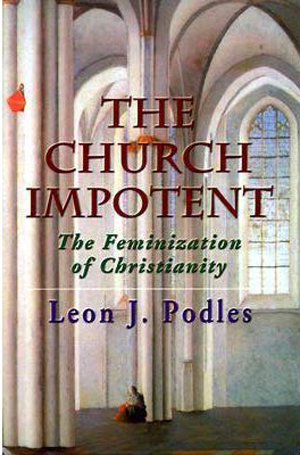
As I read this book I found myself descending into the dark world of Freud, von Balthasar, Progressivism and the Kabbalah, which were unleashed inside the Church thanks to Vatican Council II.
I could devote several articles to analyze this book, but since I am limited to a single review, I will only report what a potential reader should know.
Mixed concepts of Church
This work pretends to be a criticism of the Catholic Church. But, instead of restricting his research to the Catholic Church, the author overwhelmingly quotes statistics about Protestants and commentaries from Protestants. He groups Catholics and Protestants into what he calls “Western Christianity” (cf. Preface, p. xii), and after providing almost 30 pages of statistics on "feminized" Protestant temples and groups in the first chapter, he suggests that Protestants are the Church: “Wherever Western Christianity has spread, the church is feminized.” (pp. 25-26, 157)
So, here is his first contradiction: To attack the Catholic Church, he enrolls Protestants into the ranks of Christianity as if they were the same as Catholics.
What “church” does he mean? The reader is left in confusion. The author has mixed ideas of what Church he is criticizing, which seems to me a fundamental flaw that compromises his entire thesis.
Adoption of Freudianism
Podles explicitly promotes Freudian theories, which lead to sex obsession. I give some examples:
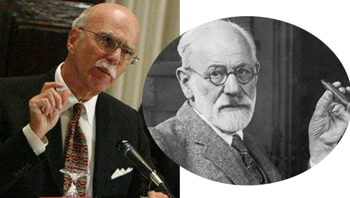
Podles, left, is clearly influenced by Freud and his sex-obsessed philosophy
He later projects this mother-son eroticism on religion. He claims that since “a woman relates erotically to a man not only as a husband and lover but also as a son and child,” (p. 119) women’s devotion to the Christ Child is an expression of this “maternal eros” (p. 119). He further deduces that when nuns have devotion to the Christ Child they “feel the child kissing their breasts” and “kiss [His] foreskin [in the circumcision].” (p. 120-121)
And, most offensively, he states that male devotion to Our Lady during the Middle Ages is another manifestation of this eroticism: “Christian men had a quasi-erotic relationship with Mary.” (pp. 148, 140)
This Freudian sexual obsession is directly or indirectly present in his entire work.
Tributary of kabbalistic androgyny
Podles assumes a criterion to judge history that is not only Freudian, but seems to slip into the dark doctrines of the Jewish Kabbalah, which is fundamentally androgynous. Indeed, the Jewish Kabballistic deity – Adam Kadmon – is made up of nine male and female elements that have sexual intercourse among themselves. The final result of this eternal orgy, “Adam,” is, therefore, an androgynous entity having both active sexes in itself.
Podles seems to pay tribute to this esoteric androgynism when:
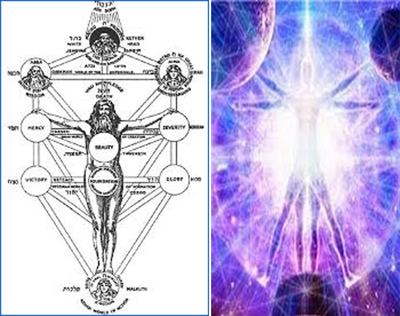
Adam Kadmon, left, the adrogynous deity of the Kaballah and many esoteric sects as having perfect 'energy'
• He affirms that the Eternal Word is also androgynous: “He conforms both men and women to his own image as Son”; (p. 87)
• He pretends that in the early Church and in the Middle Ages Jesus was described as “Mother”; (cf. pp. 79-80, 121)
• He imagines the Holy Spirit as androgynous, at times masculine and other times feminine: “The Spirit is God and as such bears a relationship to creation which can only be described as masculine. Nevertheless, there is a valid reason that he is associated with the feminine”; (p. 82)
• He defends that the “Trinity is the feminine aspect of God”; (p. 86)
• Now, applying androgynism to mankind, Podles makes this statement for both sexes: “The basic pattern of the human body is roughly female”; (p. 38)
• He states that “the presence of nipples on the male body is a constant reminder that the male is a variation on the basic female type”; (p. 38)
• He states that “the boy must achieve masculinity by rejecting the female and differentiating from the feminine to which he reverts”; (pp. 39; 43)
• The same can be verified when he argues that for women to become Christian, they must become men: “The Christian, because he is a son of God, has a primarily masculine identity… Women as well as men are called to be sons of God and brothers of Jesus Christ;” (p. 87)
• When he speaks about circumcision, androgynism seems also present as he declares that “the boy must bleed genitally, as a woman does, before he can become a man.” (p. 49)
So, according to the author, the son has a sexual attraction for the mother, and vice-versa, men should behave like women and women should be like men. It seems that Mr. Podles is paying tribute to the androgynous thesis of the Jewish Kabbalah.
Intellectual superficiality
The author quotes as many sources as he can. However, most of his sources are commentaries by others on primary sources. He presents something as fact because “Tommy wrote that Susie wrote that Johnny wrote this.”
Such an intellectual superficiality makes it hard for a reader to evaluate what the original source actually affirmed and, therefore, to take Mr. Podles seriously. When investigating the original sources of his citations, one often finds these “facts” to be unfounded and contrary to reality.
Misrepresentations
One instance of those misrepresentations is when he claims that, according to Catholic tradition, the soul is the bride of Christ, and that “all souls are feminine.” (p.115) He tries to support this false idea by interpreting literally some mystical and metaphorical texts of St. Bernard of Clairvaux.
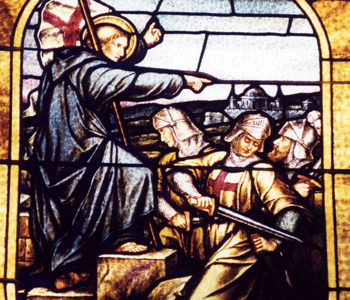
St. Bernard, a founder of the Templars & preacher of the Crusades, hardly a feminine influence
I avoid entering here into a detailed analysis of each quoted text by St. Bernard. I just want to show that the author of The Church Impotent seems to have a very limited understanding of the historical role of St. Bernard.
Indeed, besides being one of the initiators of the Order of Cistercians, which became an important branch of the Benedictine Order, St. Bernard was the inspirer and the co-founder of the Order of the Knights Templar, whose rule he wrote. It is impossible to conceive any religious institution more militant and virile than the Knights Templar. Those Knights brought the combative character of the Church to an apogee never exceeded, thanks to St. Bernard.
He was also the preacher of the 2nd Crusade, which helped to maintain the model-ideals of the Crusades and Chivalry throughout Christendom for many centuries. For the sake of the argument, if the false Freudian criteria of Mr. Podles were to be applied, St. Bernard should be considered the propeller of a process of masculinization and never of feminization. It is completely absurd to pretend that St. Bernard was a man who triggered a process of feminization in the Middle Ages.
This presupposition of Mr. Podles is constructed in the air; his thesis is arbitrary and subjective, without base in the historical reality.
No matter how many quotes he can put together from progressivist and protestant authors, I believe that no honest historian or thinker can take the inconclusive thesis of this book seriously.
Eccentricities
Further, there is a long list of other eccentricities that Mr. Podles offers to his readers. I quote some at random:
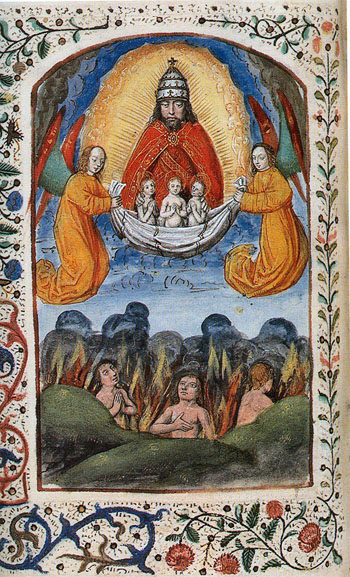
Podles pretends Purgatory was invented in the Middle Ages to please women
• Masonry is good because women are not allowed and it promotes brotherhood; (cf. pp. 155, 175-176)
• Scholasticism represented a feminization of the Church; (cf. pp. 102, 140)
• In Thomas’ [Aquinas] theological writings, "all personal love for God is excluded;” (pp. 110-111)
• After the Middle Ages, religion tried to emasculate men; (cf. 113)
• “Eroticized spirituality [was] held up as a model for sanctity from the Middle Ages to the present”; (p. 239, cf. 34)
• Protestantism was a good reaction against the feminization of the Church; (cf., pp.139, 152, 153)
• The Sacred Heart is an expression that is “soft, sometimes to the point of being effeminate”; (p. 123)
• The idea of Purgatory came from the Middle Ages and not from the first millennium; it was caused by women; (cf. 128)
• “A man can be holy or he can be masculine, but he cannot be both.” (p. 207)
Conservatives led to the far-left
After a tiresome reading of 200 pages, I asked myself, what is Mr. Podles’ solution to the alleged feminization of the Church? His answer – and I am not kidding – is that the Church should be more like the Boy Scouts. (pp. 197, 200) Voilà, finally we have the solution to all our problems…
When conservatives – including those on the false-right – who constitute the normal audience of Leon Podles, find that the traditions of the Church are too radical, they try to satiate their thirst by going anywhere else, even contaminated sources like The Church Impotent.
As such, this book seems to be a pole to push conservatives from the middle-of-the-road to the far-left in order to draw them away from the tradition of the Church and to fully embrace Progressivism in its ugliest forms.
For readers to really understand the feminization in the Church that is going on since the 19th century, I recommend they read Atila Guimarães’ 11-volume Collection on Vatican II (especially the initial chapters of volume 8, Fumus Satanae). In addition, there are well-researched articles on TIA’s page on Feminism.
Posted August 8, 2018
______________________
______________________
 Volume I |
 Volume II |
 Volume III |
 Volume IV |
 Volume V |
 Volume VI |
 Volume VII |
 Volume VIII |
 Volume IX |
 Volume X |
 Volume XI |
 Special Edition |